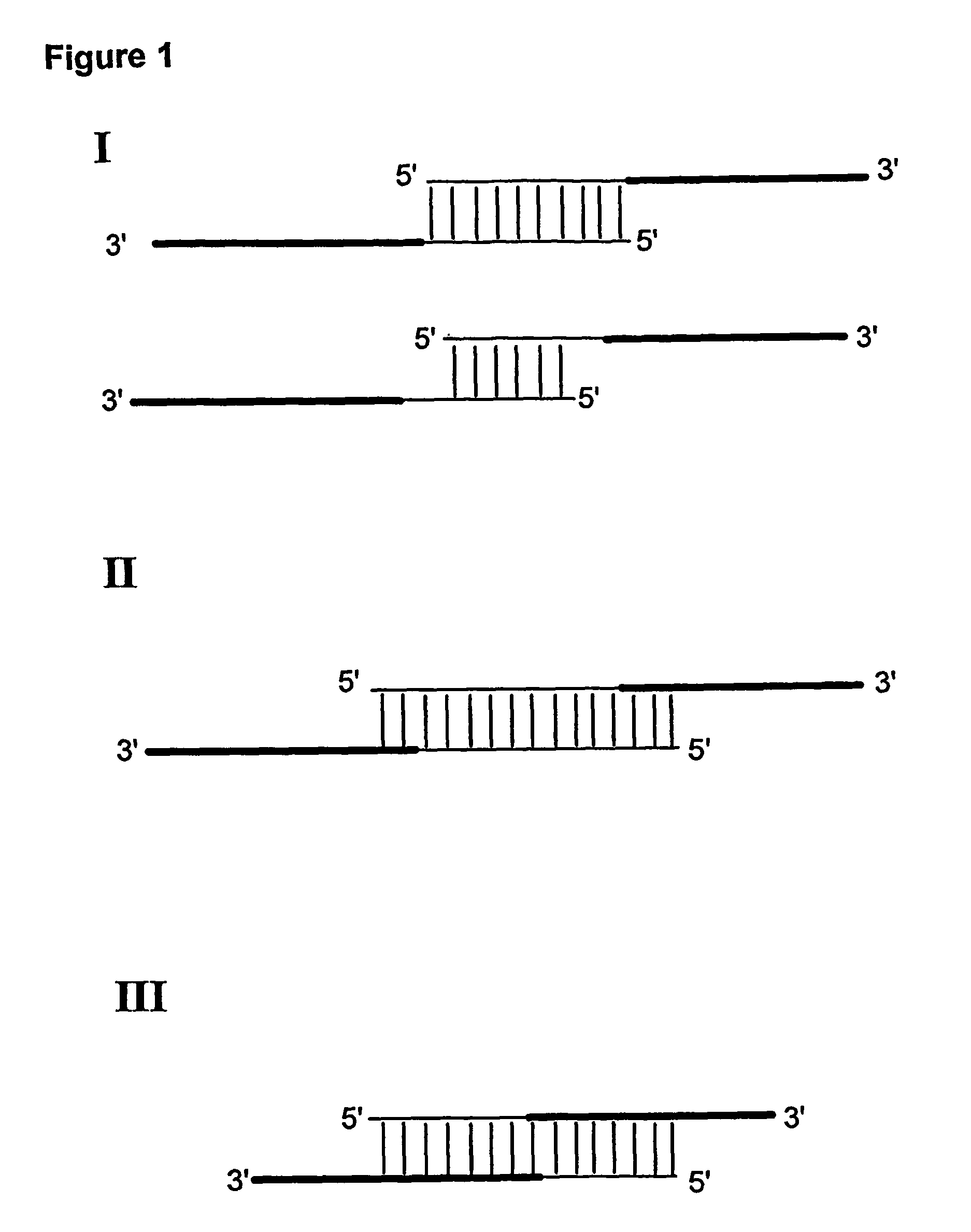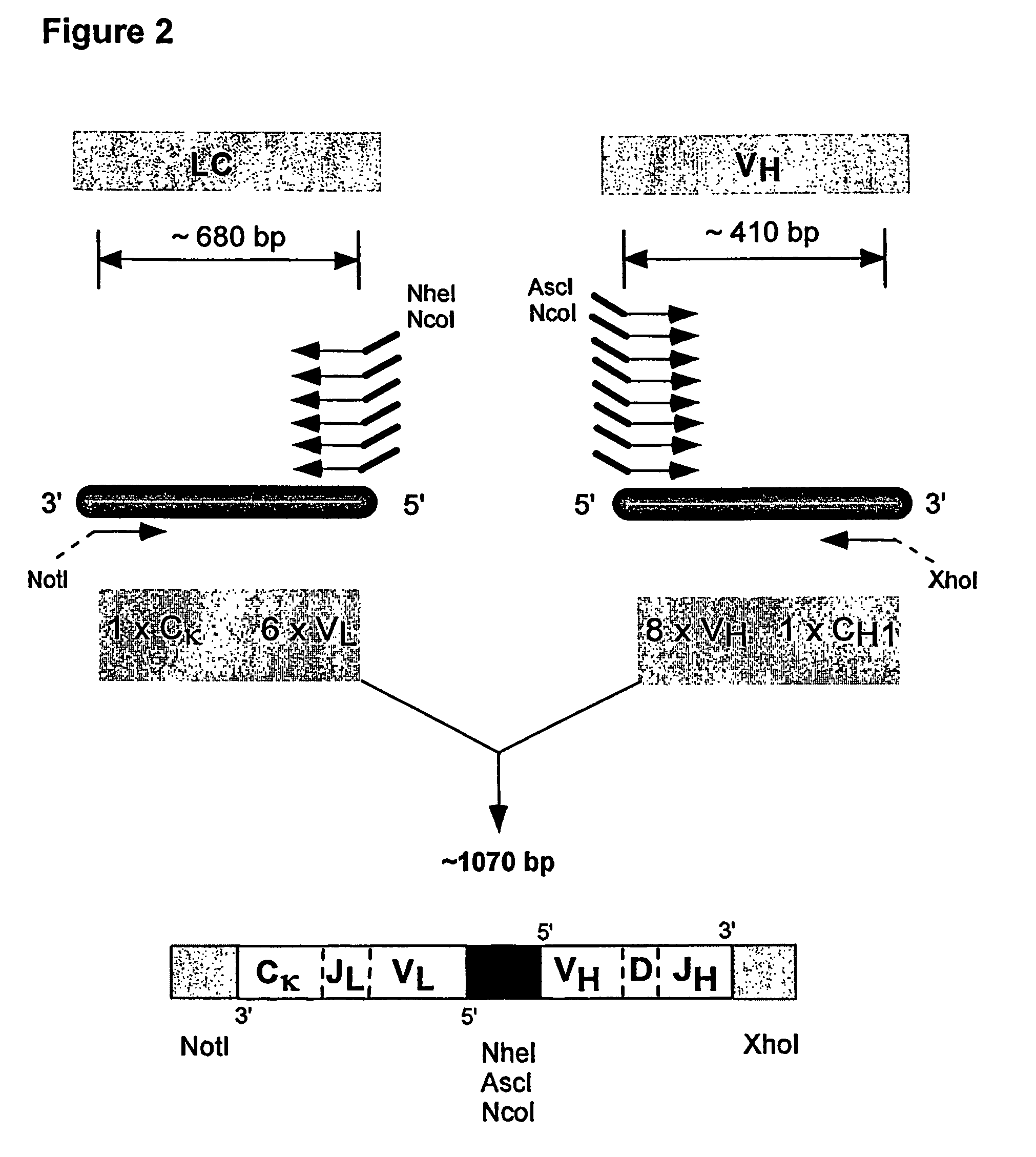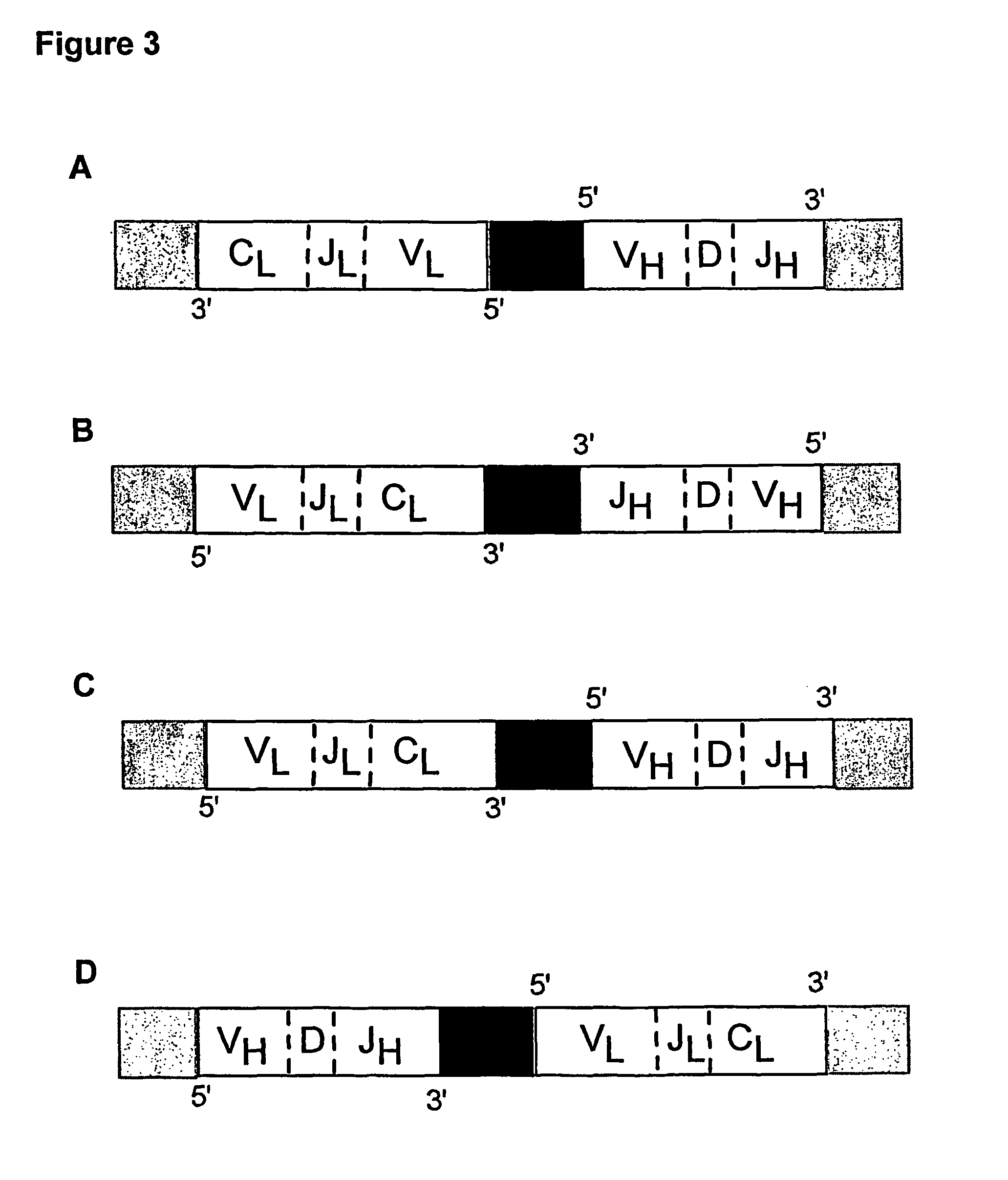Method for linking sequences of interest
a sequence and sequence technology, applied in the field of multi-molecular amplification procedures, can solve the problems of inability to use the hybridoma technology for making therapeutic antibodies, inability to produce suitable cell lines, and inability to use human lymphoma suitable as fusion partners for human b lymphocytes
- Summary
- Abstract
- Description
- Claims
- Application Information
AI Technical Summary
Benefits of technology
Problems solved by technology
Method used
Image
Examples
example 1
Two-Step Multiplex Overlap-Extension RT-PCR
[0248]In this example, reverse transcription (RT) was performed using a template derived from an isolated single cell and the cDNA produced was used as template for more than one multiplex overlap-extension PCR.
[0249]a. Cells
[0250]An IgG1-kappa expressing Chinese hamster ovary (CHO) cell line was generated using the Flp-In technology (Invitrogen, Carlsbad, Calif., USA).
[0251]An IgG-kappa mammalian expressing plasmid vector pLL113 (FIG. 4) was constructed based on the Flp-In expression vector, pcDNA5 / FRT. CHO-Flp-In cells were co-transfected, using Lipofectamin2000 (Invitrogen, Carlsbad, Calif., USA) according to the manufacturer's instructions, with pLL113 containing the antibody encoding genes and pOG44 conferring transient expression of the Flp recombinase. Transformants were selected and verified for production of IgG-kappa by immunoassays. The selected cell line was named CHO Flp-In pLL113, and maintained in Ham's F-12 medium, supplemen...
example 2
Single-Step Multiplex Overlap-Extension RT-PCR
[0292]In this example reverse transcription and multiplex overlap-extension PCR was performed in a single step using template from lysed cells, in concentrations corresponding to 100, 10, or 1 cells.
[0293]a. Cells
[0294]The human hybridoma cell line HB-8501 producing an anti-tetanus IgG1-kappa antibody was acquired from American Type Culture Collection and cultured in Iscove's Modified Dulbecco's Medium (Vitacell, Kiev, Ukraine, cat. No 30-2005) containing 10% fetal bovine serum. Before multiplex overlap-extension RT-PCR was performed, the cells were harvested, counted and frozen at −80° C. in culture medium in a concentration of 200 cells / μl.
[0295]b. Single-Step Multiplex Overlap-Extension RT-PCR
[0296]The Qiagen One-Step RT-PCR kit (Qiagen cat. No 210212, Hilden, Germany) was used for the multiplex overlap-extension RT-PCR essentially according to the manufacturer's recommendation. Before addition to the PCR tubes cell lysates were thawe...
example 3
Combined Single-Step Multiplex Overlap-Extension RT-PCR and Nested PCR
[0321]In this example, reverse transcription and multiplex overlap-extension PCR reactions were performed in a single step followed by a semi-nested PCR amplification, using template from lysed cells, in concentrations corresponding to 100, 10 or 1 cells.
[0322]a. Single-Step Multiplex Overlap-Extension RT-PCR
[0323]Multiplex overlap-extension RT-PCR using HB-8501 cell lysate was performed as described in Example 2 utilizing a multiplex overlap-extension primer mix comprising the primers shown in table 4.
[0324]
TABLE 4SEQPrimerIDprimer sequence in 5′ to 3′nameConc.NOdirectionVH40 nM41tattggcgcgccatggccCAGRTGCAGCTGGTGCofARTeach42tattggcgcgccatggccSAGGTCCAGCTGGTRCAGT43tattggcgcgccatggccCAGRTCACCTTGAAGGAGT44tattggcgcgccatggccSAGGTGCAGCTGGTGGAG45tattggcgcgccatggccCAGGTGCAGCTACAGCAG46tattggcgcgccatggccCAGSTGCAGCTGCAGGAGT47tattggcgcgccatggccGARGTGCAGCTGGTGCAGT48tattggcgcgccatggccCAGGTACAGCTGCAGCAGTCCH1–5200 nM49AAGTAGTCCTT...
PUM
 Login to View More
Login to View More Abstract
Description
Claims
Application Information
 Login to View More
Login to View More - R&D
- Intellectual Property
- Life Sciences
- Materials
- Tech Scout
- Unparalleled Data Quality
- Higher Quality Content
- 60% Fewer Hallucinations
Browse by: Latest US Patents, China's latest patents, Technical Efficacy Thesaurus, Application Domain, Technology Topic, Popular Technical Reports.
© 2025 PatSnap. All rights reserved.Legal|Privacy policy|Modern Slavery Act Transparency Statement|Sitemap|About US| Contact US: help@patsnap.com



